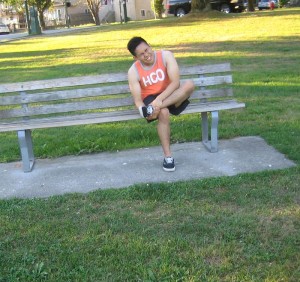Shin splints are the term used to describe the pain in the interior part of the lower leg. It is considered as one of the most common sport injuries and can occur in any individual. The condition can involve inflamed tendons, muscles and the thin layer of tissue covering the bone. Even though it can be painful, most cases of shin splints can be easily treated with the application of ice, using shoes that provide adequate protection to the feet and over-the-counter medications for pain.
How shin splints develop
Shin splints can develop over some time when constant stress is placed on the muscles, bones and joints in the lower leg. It results to inflammation and irritation which both causes pain. There are also other factors that can contribute to the development of shin splints.
- An abrupt increase in the intensity, duration and frequency of any exercise routine will put the individual at risk for injury as well.
- Downhill running in which the foot hits the ground in a plantar-flexed position, thus adding stress on the muscles in front of the shin.
- Working out in hard or inclined surfaces adds stress on the leg.
- Using old shoes that do not absorb shock properly while the arch support flattens will worsen the inflamed tissues in the lower leg.
- Anatomical problems with the foot such as rigid arches, flat feet and overpronation can cause pressure to be unevenly distributed on the lower legs.
- Previous history of shin splints will put an individual at risk for the same injury in the future.
- Individual was not able to properly rehabilitate a previous shin splints.
Who are at risk for shin splints?

Shin splints commonly occur among runners, tennis players, basketball players, hikers and even soccer players.
Symptoms of shin splints
If you suspect shin splints, the following symptoms will gradually manifest.
- Lower leg pain
- Mild swelling
- Pain once the foot or toes are bent forward
- Tenderness at the interior part of the lower leg
Take note that the pain initially subsides if the individual stops the activity but later on becomes continuous.
Treatment for shin splints
The best treatment for shin splints is the RICE method. If you want to learn more about the RICE method for injuries, click here. Initially, the individual must rest and avoid any activities that triggered the pain. Apply an ice pack or cold compress over the affected area for 15-20 minutes every session for 3-4 times in a day.
Compress the affected area by using a compression sleeve or elastic wrap. Do not forget to elevate the limb using a pillow or cushion when sitting and when sleeping at night.
Arch supports can be used since they provide cushion to the impact as well as distributes the stress. Over-the-counter medications such as naproxen, aspirin and ibuprofen can be given for pain relief and to reduce the inflammation.
In case the pain lasts for more than a week, it is best to consult a doctor.
